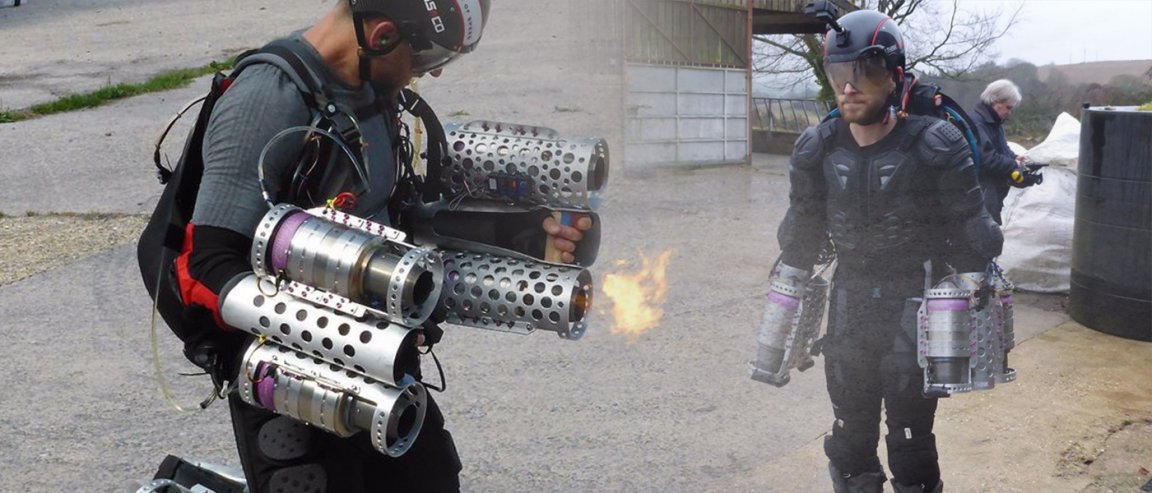
A New Way To Fly
The media is bursting at its seams with what seems to be the superhero revolution. Comic book publishers like Marvel and DC have spilled over onto the big screen, and now it may look as though they’re spilling over into our technology in the real world. While we have been making efforts at a superhero heads up display or an iron man workout suit, we are also inching our way up to a functional flight suit.
Gravity is a British technology start-up started by Richard Browning on March 31, 2017. The company has developed a human propulsion system to re-imagine manned flight. With miniaturized jet engines and a customized exoskeleton, the Daedalus is expected to push us into a new era of aviation. Browning and his team developed the suit over the course of 2016, with the team’s journey covered in this short documentary:
The Future of Flight
Browning’s team put together six kerosene-fuelled micro gas turbines to lift the manned-suit up—essentially, a man tethered to six compact jet engines. Initial testing began with Browning performing assisted jumps with four engines. Thinking additional engines would help him levitate off the ground, the team added two additional engines with leg mounts. The final design looks slightly different, as it houses two engines within the suit’s back in conjunction with two engines attached at each arm. The design also has a heads-up display that relays fuel information to the user through a WiFi connection. The suit is expected to reach speeds of 160 km/h (100 mph), but you can test that out yourself.
![[Kelsey] We’re One Step Closer to The Iron Man Suit](https://futurism.com/wp-content/uploads/2017/04/browning.jpg?strip=all&quality=85)
If you want to get a custom suit of your own, it is estimated to cost around $250,000. Although, Browning suggests that operators are physically fit in order to maneuver the suit. He adds that since he weighs only 70 kilograms (160 pounds), he was able to fly with relative ease.
Gravity’s developments marks the beginning of a new era of human aviation. While the suit seems clunky now, so did the first computers when they were built. We’re witnessing pockets of intelligent capital develop, and isn’t too hard to imagine the future of this technology.